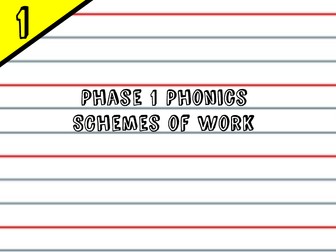Phase 1 Phonics Schemes of Work (Including Exemplar Daily Plans and Activities)
<p>Introducing our Termly Scheme of Work for Phase 1 Phonics, designed to provide teachers with a comprehensive and structured plan for teaching phonics to Nursery and Reception classes.</p>
<p>Our daily activities for each week are designed to be adaptable for both carpet sessions and small group work, allowing for flexibility in teaching. The resource is easily customisable to meet individual class needs, making it an ideal choice for educators seeking to optimise their teaching strategies.</p>
<p>With our Termly Scheme of Work for Phase 1 Phonics, teachers can be confident in their ability to provide high-quality phonics instruction that prepares students for success in reading and writing.</p>

